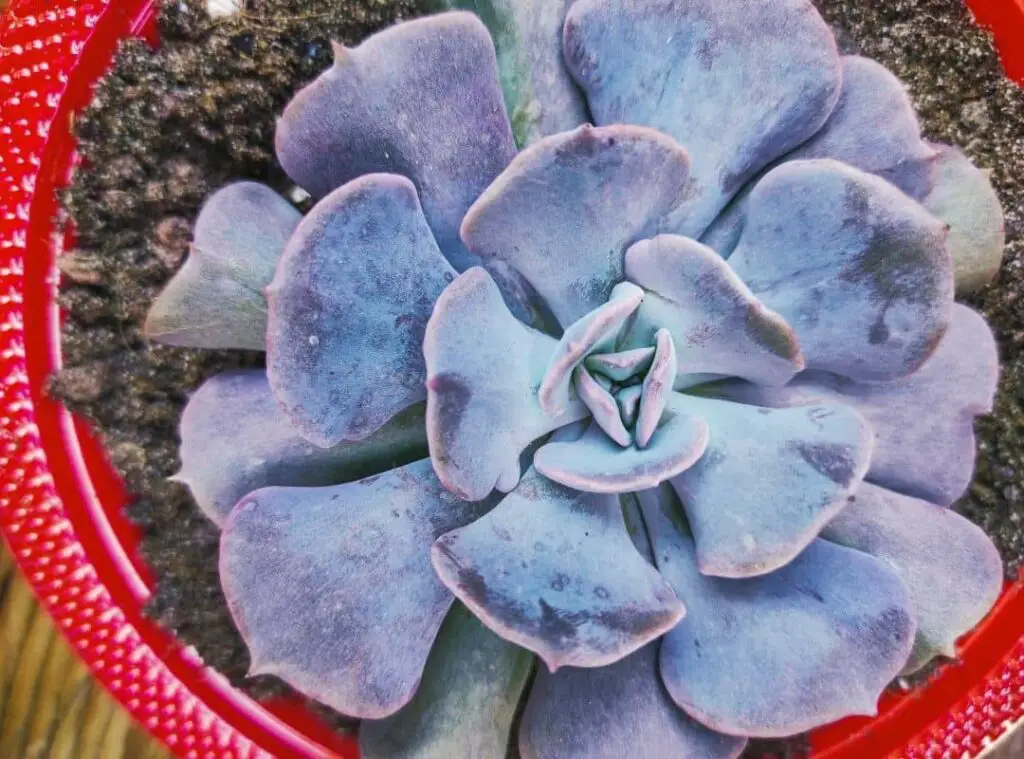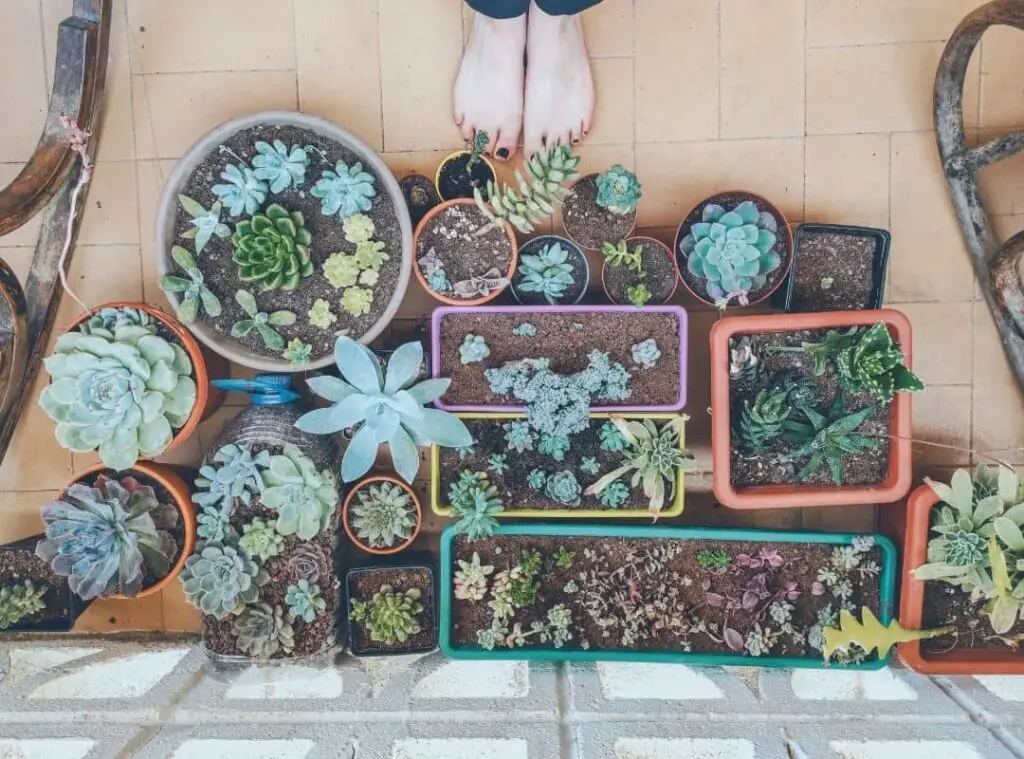When you reading an article about succulent you might have come across the words cultivar and hybrids. I am sure you have doubts about these words and here to clear your doubts in this article on succulent cultivar vs hybrids.

What is a cultivar?
Succulent cultivator means a succulent which comes as a cultivated variety of a particular succulent. They are different from their ancestral plants in their natural habitat.
These cultivators get their names mainly from the humans. Furthermore, most of the time humans intervene in cultivating them.
Having said that, there could be cultivators of natural mutations. For example, variegation or crested growth are considered cultivators.
Further keep in mind that every plant you come across in a cultivation are not cultivators as there could be hybrids plants as well.
Usually, humans get involved in creating these succulent cultivators on many occasions. On the other hand, there are succulents where they have a natural mutation too.
It could be either in the species you may come across in the wild or even in the plants which are grown in the nurseries. When the mutation happens, it could be different in color, different in shape.
Further they would be having different growth patterns , different blooms. Finally, they would be somewhat different in the way they resist pests attacks.
Experts have discovered that they can use chemicals and create new cultivators in the succulents. Further you may expose them to stimulants as well.
Apart from that there are other ways of introducing growth abnormalities. You may try them only if you are an expert in horticulture.
There is a high demand among the succulent enthusiasts to purchase these cultivators. Using the tissue culture method is another way of producing new cultivators.
Cultivar examples
- Echeveria Romeo
- Haworthia Cymbiformis Variegata
- Euphorbia Flanaganii Cristata
What is a hybrid?
In simple words, hybrid means a cross between a couple of species which are genetically similar.
The method called “cross pollination” is used here and there will be two different plant varieties which belong to the same class.
Further It could belong to the same genera as well, but it is not mandatory to be so. You need to select the two plants carefully and ensure that you remove the pollen as then that will avoid pollinating by themselves.
However, you will not have successful results if you use two plants which are completely different from one another and which belong to two different classes.
To elaborate further on this, it is very unlikely that you will succeed with crossing Echeveria Glauca and Crassula Ovata even though they belong to the Crassulaceae family.
You need to control pollination in a careful manner which will allow the plants growing from seeds to have features from both the plants which were used for this process.
You may call the initial seed as F1 and if you do it right , they will flourish to be uniform plants. You may raise the seeds as crops or sow them in a sterile environment.
Hybridization is not done by human’s interventions all the time. It could take place naturally when they are in the natural habitat and through accidental pollination too.
Many people tend to make hybrid plants so that they can make these plants more resilient which could bear more seeds and larger fruits.
However, when it comes to the context of the succulent hybridization, they do it for different reasons. For example, horticulturists tend to create new hybrids to make them look stronger and to thrive better in the harsh growing conditions.
On the other hand, there could be some who wish to make hybrids with the purpose of having a plant which has some of your desired characteristics.
Hybrid examples
- Gasteraloe (Gasteria x Aloe Hybrid)
- Sedeveria (Echeveria x Sedum hybrid)
- Echeveria Dusty Violet (Echeveria Cante x Echeveria Imbricata)

What is the difference between a hybrid and a variety?
A natural variation of a plant within a species is called a variety or subspecies.
If we consider a succulent like Cotyledon orbiculate, you may come across so many naturally designed varieties of it such as Cotyledon orbiculata var. orbiculate which has leaves in round shape.
On the other hand , there could be a variety such as Cotyledon orbiculata var. oblonga. Which comprises oblong shaped leaves.
On the other hand, hybrid succulent means a genetic cross between two succulent species which ultimately make a completely new plant.
A hybrid plant could be entirely new which you had never come across before. To hybridize, you need to be a little patient and await how the plant turns out to be and you can’t even predict the characteristics your hybrid plant may have.
How are new cultivars made?
You could make new cultivators through hybridization. You may simply use two different species and genetically cross them. This is a commonly used method especially in the nurseries.
Succulent cultivar vs hybrid aloe
Succulent cultivator is a subgroup of the same species which forms in a cultivation.
Whereas hybrid aloe is a combination of two aloes which are cross pollinated. This could take place with human intervention or even naturally.
Can you propagate cultivars?
You could propagate the cultivators by using leaf cuttings , stem cuttings , and seeds. Further you could use division also to propagate them too.
How to propagate by using the leaf cuttings?
What usually happens in the leaf cutting method is snipping off a healthy plump leaf from a mature succulent and growing a new plant from that.
You may use this method particularly with the cultivators which have plump, fleshy leaves. For example ( Echeveria cultivators) could be a fine example for this.
You could simply make a clean cut of the leaf whilst using a sterile knife or a pair of scissors. However, when you cut the leaf, assure that you are obtaining the whole leaf for the propagation process.
Check whether any part of the leaves is remaining on the plants, if so, it is very unlikely that you will succeed with the leaf cutting propagation method.
Next, leave the leaf cutting in a dry place where they can gain bright sunlight for a couple of days so that it will allow the cut ends to dry and develop callous.
Next, you could go ahead and place them in a planter in which you have filled with a well-draining soil mix.
You may use a water spray bottle and mist the leaves whenever you spot their soil is in dry condition.
Refrain in exposing them to direct sunlight, instead expose them for bright indirect sunlight. They would produce roots within a couple of weeks.
When the original leaf is brown and falls, you could go ahead with transplanting them. By this time, your succulents have absorbed all the nutrients from the leaf, and it will be the time to get rid of it.
How to propagate by using the stem cuttings
If your succulent cultivator has branches or if they have rosettes which have formed on a long stem, best is to go ahead with the stem cutting method.
Ideal time to use stem cutting and conduct propagation would be at the start of their active growing season. Alternatively, you may do it at the end of their dormancy too.
To start off, you need to arrange a sterile sharp knife or even a razor blade. Select a short stem of your succulent and hold it with the base from it and make a clean cut.
The purpose of using a short stem is that you can be sure that it is active and growing well. Best is to obtain a few cuttings and keep them ready in case they damage during the propagation process.
Before you plant them, ensure that they are calloused. When you pot them, keep the specimen in a location where they can gain a lot of bright indirect sunlight. You may water them lightly here. They will start to form roots within a month’s time.
You may go ahead with this method , if you have a rosette shaped succulent cultivator which has grown a longer stem due to shortage of sunlight or maturity.
To propagate them, you need to snip off the rosette while using a sharp sterile knife as aforesaid. Next you need to allow them to wither for a few days.
That will be helpful to avoid any potential fungal infection . You will see how the stem starts to produce the leaves. You may either leave it in the same pot and plant them in a different pot.

How to propagate by using the seeds
Propagating the succulents using seeds is the slowest method out of all these. Having said that, if you can stay patient, this method is worth trying.
Seeds are usually included in the fruits of the succulents. When they complete flowering, you may obtain the seeds from them.
You have the option of buying the seeds from the nurseries also. However, no matter from where you obtain the seeds, ensure that they are fresh and dry. Best is to try them propagating in spring.
To do this, you need to first arrange a container or a planter in which you have filled with cactus soil or with succulent soil.
Give it a thorough watering. Next, soak the seeds in water for about a half hour. That will loosen the seed coat.
Once it is completed, you may simply spread the seeds on the top of the soil layer. However, when you spread them ensure that they have enough space among each so that they can grow well when they mature.
As the next step, you could cover the seeds with a top dressing. Do not bury them though. Spray them with some water to make the soil layer moist.
You need to keep the specimen in a warmer place and cover the planter either with a Ziplock bag or with a plastic bucket.
That will create an effect of a greenhouse and help to keep them in moist and warm conditions.
The germination would take place within two weeks of time, and you may start watering them once every other day when it is about six weeks’ time.
How to propagate by division
If your succulent cultivator has offsets or pups forming around the base of the plants, you could go ahead with this method.
You could spot the pups as little plants which arise around the base of the plants. To divide them, you need to first brush the soil away from the plants until you could spot the root of the plants.
Then you need to gently remove the plants off from the soil whilst ensuring that they have maximum roots they can get hold of.
If you are obtaining immature offsets , chances are that they are still connected to the mother plants by a stem.
In that circumstance, you need to use a clean sharp sterile knife to separate them. Once you remove them you need to knock away the older soil around them and leave them in a spot where they can wither.
Locate them in a spot where they can gain bright indirect sunlight. That will avoid any potential root rot or any other bacterial infection which could take place.
When they develop callousness, you may proceed with potting them in a new planter which is filled with a cactus or a succulent soil mix.
Next wet the soil mix and plant them in a shallow hole in the pot. Ensure that it is well established in the planter. You could see how they form new plants during a few week’s time.
Recently asked question
Are all cultivars’ clones?
Not all cultivators are clones . However, you may use the bio technology and convert them to clones in the future.
Is a strain a cultivar?
Strain is referred to as a cultivator of cannabis. This is a term which is used mainly in biology rather than in botany.
Read Next : Kalanchoe Pink Butterfly | You Will Be Amazed By This Plant |
